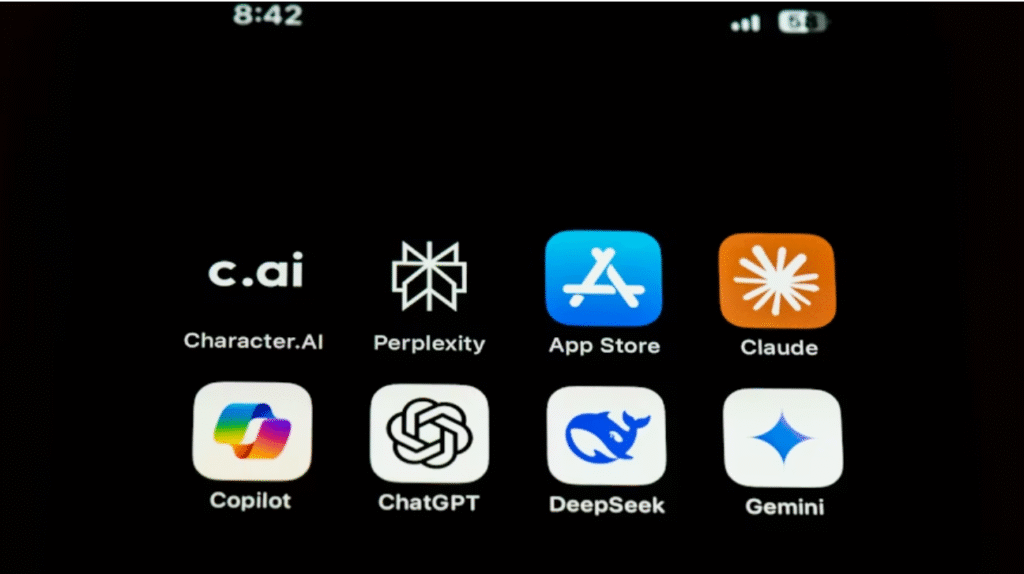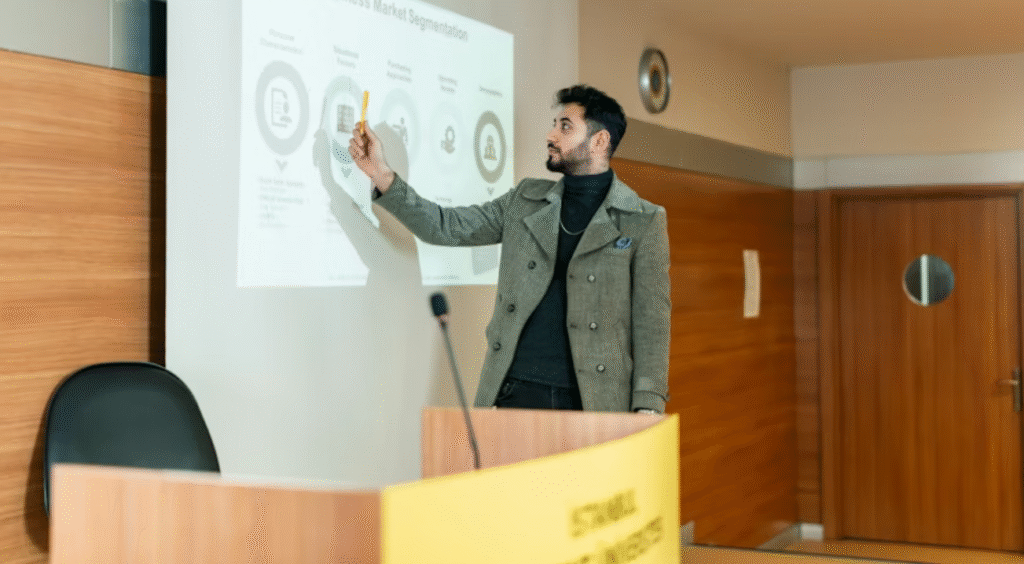Artificial Intelligence (AI) is no longer a futuristic idea reserved for sci-fi movies. Today, it’s woven into nearly every aspect of our daily lives often in ways we don’t even realize. From personalized recommendations on streaming platforms to advanced medical diagnostics, AI has quietly become the engine powering modern innovation. As industries rapidly adopt AI-driven tools, the impact on society, work, and personal convenience continues to grow.
This article explores how AI is transforming everyday life and reshaping our future, with a focus on healthcare, finance, transportation, smart homes, education, and more. Whether you’re an enthusiast, a professional, or simply curious, understanding AI’s influence can help you prepare for what lies ahead. Read more from researchers.
What Is AI and Why Does It Matter Today?
Artificial Intelligence refers to machines designed to perform tasks that typically require human intelligence—such as learning, problem-solving, speech recognition, and decision-making. AI systems can analyze massive amounts of data, identify patterns, and make predictions faster and more accurately than humans ever could.
Why is this important today?
Because we live in a world driven by data. Every online action, financial transaction, photo taken, or search query contributes to an immense pool of information. AI helps process this data and extract insights, making life easier, businesses smarter, and systems more efficient.
AI in Healthcare: Saving Lives Through Intelligent Innovation
Few industries have embraced AI as extensively as healthcare. Here’s how AI is improving medical services and patient experience:
1. Early Disease Detection
AI-powered systems can analyze medical images—X-rays, MRIs, CT scans—with remarkable accuracy. In some cases, AI detects abnormalities earlier than a human specialist. This is especially crucial for conditions like cancer, where early detection can save lives.
2. Personalized Treatment Plans
By examining patient data, lifestyle patterns, genetic information, and medical history, AI can help create tailored treatment plans. This personalized approach leads to better outcomes and more effective treatments.
3. Virtual Health Assistants
Chatbots and AI-driven apps now offer basic medical guidance, appointment scheduling, medication reminders, and remote monitoring. These tools make healthcare more accessible—especially in underserved regions.
4. Predictive Analytics for Hospitals
Hospitals use AI to manage resources, predict patient admissions, optimize staff schedules, and improve overall efficiency. This reduces wait times and enhances the quality of care. Check out – Advancing AI research, education, and policy to improve the human condition.

AI in Finance: Smarter, Faster, and More Secure
AI has revolutionized the financial sector, making services faster, safer, and more user-friendly.
1. Fraud Detection
Banks use AI to analyze millions of transactions instantly. Suspicious patterns trigger alerts, helping prevent fraud before it happens.
2. Automated Customer Service
AI-powered virtual assistants can handle customer inquiries 24/7, providing instant answers to common questions, reducing queue times, and improving user experience.
3. Personalized Financial Advice
Robo-advisors use algorithms to help individuals invest based on their goals, risk tolerance, and financial behavior. This has made investing accessible even for beginners.
4. Credit Scoring and Loan Approvals
AI provides more accurate credit risk assessments by analyzing not only financial history but also spending patterns and digital behavior, helping lenders make fairer decisions.
AI in Transportation: The Road to a Smarter Future
Transportation is undergoing a massive transformation powered by AI.
1. Autonomous Vehicles
Self-driving cars rely on AI to interpret surrounding environments, detect obstacles, and navigate safely. While not yet mainstream, the technology continues to advance rapidly.
2. Ride-Hailing Platforms
Apps like Uber and Bolt use AI for route optimization, surge pricing, driver-passenger matching, and safety monitoring.
3. Traffic Management
Cities are adopting AI systems that analyze traffic flow in real time, reducing congestion, improving safety, and shortening commute times.
4. Smart Logistics
Delivery companies use AI to optimize routes, predict delays, automate warehousing, and track shipments efficiently.
AI in Smart Homes: Convenience at Your Command
Smart home technology has made AI an everyday companion.
1. Voice Assistants
Devices such as Google Assistant, Alexa, and Siri can play your favorite music, control lights, answer questions, and manage your schedule—all through simple voice commands.
2. Smart Appliances
AI-powered refrigerators track groceries, smart thermostats learn your temperature preferences, and connected security systems enhance home safety.
3. Energy Efficiency
AI helps households save electricity by optimizing energy use, detecting waste, and suggesting improvements.
AI in Education: Personalized Learning for Every Student
Education is being reshaped by AI-driven tools that support teachers and empower students.

1. Personalized Learning Paths
AI analyzes student performance to customize lessons, ensuring learners advance at their own pace.
2. Automated Grading
Teachers save time as AI handles grading for assignments, quizzes, and tests—especially objective questions.
3. Virtual Classrooms
AI enhances online learning with interactive tools, real-time feedback, and adaptive content.
4. Language Translation Tools
Students can easily learn and translate content, making global education accessible to more people.
AI in Business and Work: Boosting Productivity and Innovation
AI is transforming workplaces in countless ways:
1. Automation of Routine Tasks
From data entry to basic customer inquiries, AI takes over repetitive tasks—allowing employees to focus on strategic work.
2. Predictive Analytics
Businesses use AI to forecast trends, understand customer preferences, and make informed decisions.
3. Recruitment and HR Tools
AI screens CVs, identifies top candidates, schedules interviews, and reduces hiring bias.
4. Enhanced Customer Experience
Chatbots, recommendation engines, and personalized marketing campaigns help businesses deliver better service.
AI in Entertainment: A Personalized World of Fun
AI plays a major role in shaping how we consume entertainment.
1. Streaming Recommendations
Platforms like Netflix and YouTube use AI to suggest content based on your viewing habits.
2. Gaming
Modern video games use AI to create intelligent opponents, improve graphics, and generate lifelike environments.
3. Music Creation
AI tools can compose music, assist musicians, and personalize playlists.
The Ethical Side of AI: Challenges We Must Consider
With great innovation comes important questions:
- Privacy concerns: How is personal data collected and used?
- Job displacement: Which roles will be automated—and can workers transition to new opportunities?
- Bias in AI systems: How do we ensure fairness in algorithms?
- Security risks: How can AI systems be protected from hacking or misuse?
Addressing these issues is essential to ensure that AI benefits everyone equitably.
The Future of AI: What to Expect
AI will continue shaping the world in ways we are just beginning to understand. Expect to see:
- Smarter cities powered by real-time analytics
- Advanced robotics supporting industries and homes
- More intuitive personal digital assistants
- Breakthroughs in medicine, climate science, and energy
- Seamless integration of AI into daily tasks
AI’s future isn’t about replacing humans—it’s about empowering us to achieve more.
Conclusion
Artificial Intelligence has already become a driving force behind modern life. From healthcare advancements to personalized digital experiences, AI is reshaping industries and redefining our daily routines. As technology continues to evolve, its impact will only grow, offering new opportunities and transforming the way we live, work, and interact with the world.
By understanding AI today, we can better prepare for and participate in the intelligent future ahead.









